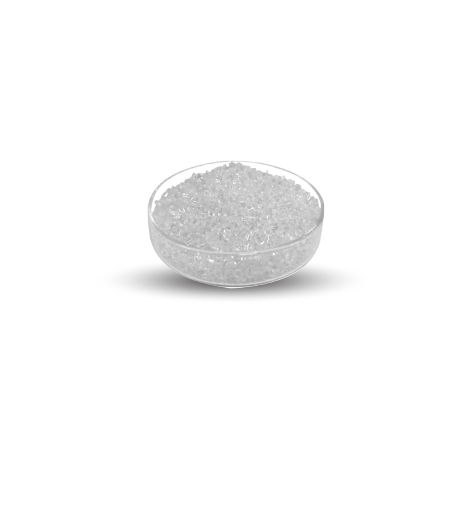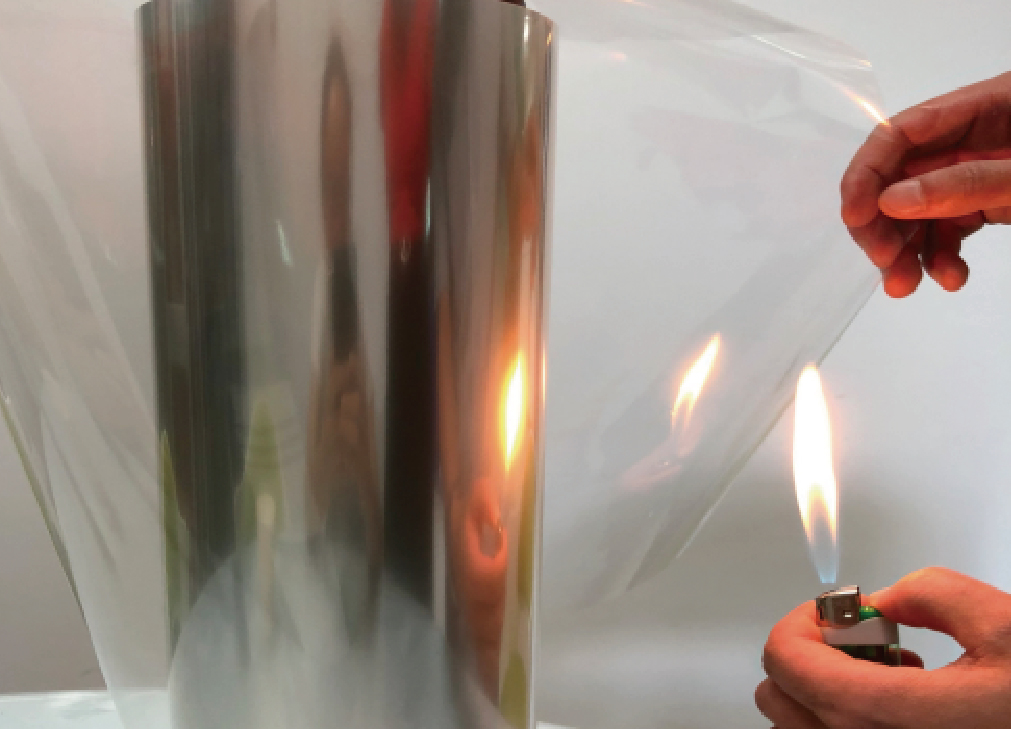Product Features
1. High Flame Retardant Efficiency, Halogen-Free & Eco-Friendly
• Effective at Low Loading: In polyester film processing, adding only 5%-10% of this masterbatch easily achieves a UL94 V-0 rating, with an LOI ≥ 38%. This is significantly lower than the typical loading required for conventional halogen-free flame retardant masterbatches, minimizing impact on the substrate's mechanical properties.
• Completely Halogen-Free: Contains no chlorine, bromine, or other halogen elements. Does not produce toxic and harmful gases like dioxins or hydrogen halides during combustion. Features low smoke toxicity and density. Complies with environmental standards such as EU RoHS, REACH, and domestic GB/T 2406.2, meeting stringent environmental requirements for electronics and food packaging.
2.High Transparency, Minimal Impact on Film Appearance
The phosphorus-nitrogen nano-Si-Al-Zn composite polymer exhibits excellent compatibility with polyester resin. After nano-dispersion processing, it achieves uniform dispersion within the resin matrix without significant agglomeration or migration. Films exhibit light transmittance ≥ 88% (at 50μm thickness, 8% loading) with a haze change ≤ 2%, maximally preserving the transparent characteristics of the base PET substrate. Suitable for optical application scenarios (e.g., transparent packaging, display films, optical protective films).
3. High Metal Corrosion Safety, with Equipment Protection Benefits
• Zero Corrosion Risk: The phosphorus-nitrogen nano-Si-Al-Zn polymer is chemically stable, with no free acid groups in its molecular structure. It does not decompose to produce acidic substances (e.g., hydrogen halides, free phosphoric acid) at polyester film processing temperatures (260-290°C). Even during long-term continuous use (e.g., on BOPET production lines), it will not corrode stainless steel equipment components (e.g., 304, 316 stainless steel screws, dies, cooling rolls) or ordinary steel structures, effectively addressing the industry's core concern regarding "flame retardants corroding equipment and shortening service life".
• Equipment Protection & Enhancement: The zinc component in the polymer can form an extremely thin, dense inorganic oxide film on the metal surfaces of the equipment. This film provides a slight barrier against trace moisture and small molecule impurities from resin degradation in the processing environment, offering auxiliary protection for metal components, reducing daily maintenance costs, and extending the service life of core parts
4. Enhanced Film Antioxidant Properties and Moisture Vapor Barrier
• Long-lasting Anti-Oxidation: The nitrogen-phosphorus components in the polymer can inhibit the oxidative degradation of polyester resin during high-temperature processing and long-term use, reducing film yellowing, embrittlement, and mechanical property decay caused by oxidation. This extends the storage life and practical service life of film products (especially suitable for film applications outdoors or in high-temperature environments).
• Enhanced Moisture Vapor Barrier: The nano-reinforced char layer formed during flame retardation (condensed-phase action) optimizes the film's microstructure, filling tiny pores in the substrate and indirectly reducing the Water Vapor Transmission Rate (WVTR). This enhances the film's moisture protection capability for packaged contents, particularly suitable for packaging moisture-sensitive electronic components and high-barrier food packaging.
5. Strong Processing Adaptability and Good Compatibility
• Uniform pellet morphology with good flowability (angle of repose ≤ 35°). Can be directly mixed with polyester chips (PET) in proportion and fed into film processing lines like biaxial orientation or cast film, without needing to adjust core parameters like temperature or screw speed, reducing production debugging costs.
• Good compatibility with common additives in polyester systems (e.g., antioxidants, lubricants, anti-blocking agents, slip agents), without adverse reactions. Does not negatively affect key mechanical properties like tensile strength, elongation at break, or flex endurance.
Usage method
Addition Ratio: Depending on the required flame retardancy level, it is recommended to add 5% - 10% of this masterbatch into the polyester substrate (8% is conventionally recommended for the optimal balance of UL94 V-0 rating and high transparency; if a higher LOI is needed, the loading can be appropriately increased to 10%).
 HZ-ZRM-8V0
HZ-ZRM-8V0 Add to shopping cart
Add to shopping cart Buy
Buy










